What is TTL Flash?
TTL stands for Through The Lens, and refers to the camera metering the exposure through the lens, rather than using an external light meter. The exposure meter reading is used by the camera when determining the aperture and/or shutter speed in any auto exposure mode.
Virtually all cameras made today use TTL metering. A TTL flash means that the output of the flash can be set automatically by the camera, based on the camera's TTL metering system.
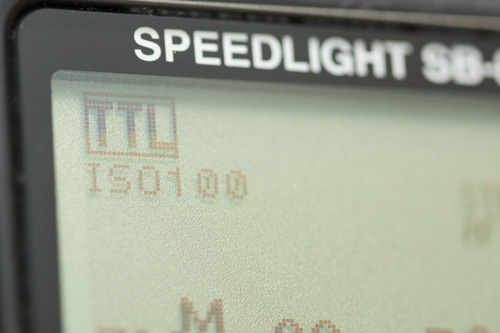
TTL mode on flash speed light
Digital TTL vs. Film TTL
With old TTL flashes that were designed for film, the compatible film cameras had a small sensor that detected light reflected from the film. The camera would fire the flash, and when the sensor had captured enough light for the calculated flash exposure, the flash output would stop.
With digital cameras however, the camera sensor that replaces film is not reflective enough for this system. Instead, the flash fires a pre-flash before the exposure starts. This is a low intensity flash, but enough light bounces back to the camera so that the camera can calculate what the correct flash exposure should be.
To differentiate between the two systems, camera manufactures added an initial in front of their TTL flash systems designed for digital cameras. Canon uses e-TTL, Nikon uses iTTL, and Pentax uses P-TTL.

Full Speed Ahead... by jdanvers on flickr (licensed CC-BY) - taken using TTL flash
The different manufacturers also use different methods of communicating the TTL information between the camera and the speed light. This means that you cannot use a Nikon iTTL flash on a Canon camera and vice versa. (Well, you can, but it will not work in TTL mode and you can't adjust the flash output from the camera).
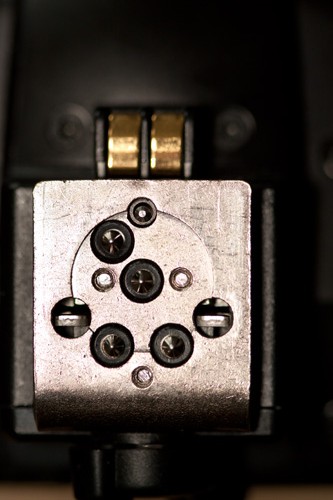
Foot of a Nikon Flash
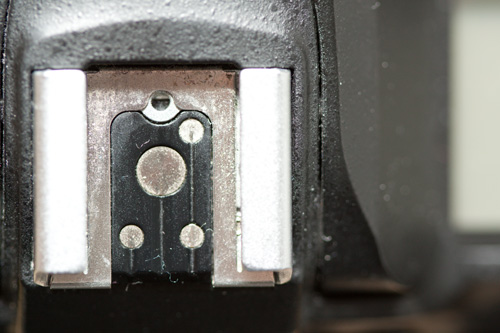
Nikon Hot shoe - you can see the contacts match the pins on the flash foot
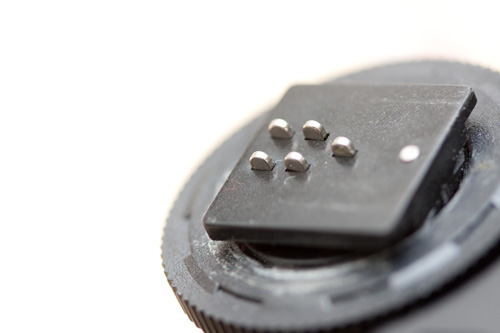
Foot of a Canon flash - uses a different pin arrangement to Nikon
On the bottom of TTL flashes there are extra pins that carry the information between the camera and flash. The center pin is the trigger pin, which can be found on all hot shoe flashes.
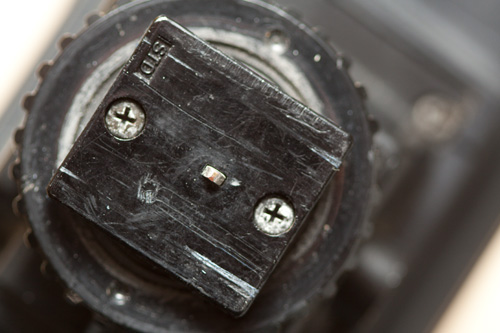
This old non-TTL flash only has the center pin needed for firing the flash
If you are looking to purchase a flash that will automatically adjust it's output based upon the camera's exposure metering, make sure that it is compatible with your digital camera. Virtually all currently camera manufacturer branded TTL flashes will be, but if you are buying an old flash on ebay, it is important to check.
Of course, old flashes will always work in manual mode. (Though there can be voltage mis-match problems with some old flashes).
If you are wanting a flash that will automatically adjust its power based on the camera settings, then a TTL flash is a good choice. If you prefer to work with all manual settings, or will be using the flash off camera with a 'dumb' wireless flash trigger, (the next article will be about off camera flash options), then you'd probably be better to your save money and go for a non TTL flash.
If you will mainly be working manually, but might sometimes want to make use of TTL flash, then get a TTL flash. Nearly all TTL flashes will also work in manual mode as well as TTL mode.




